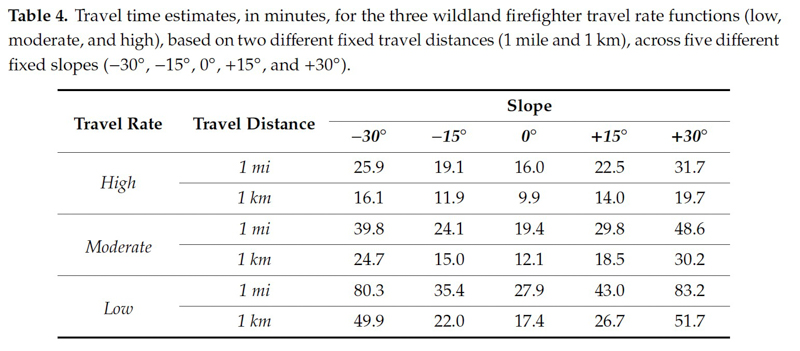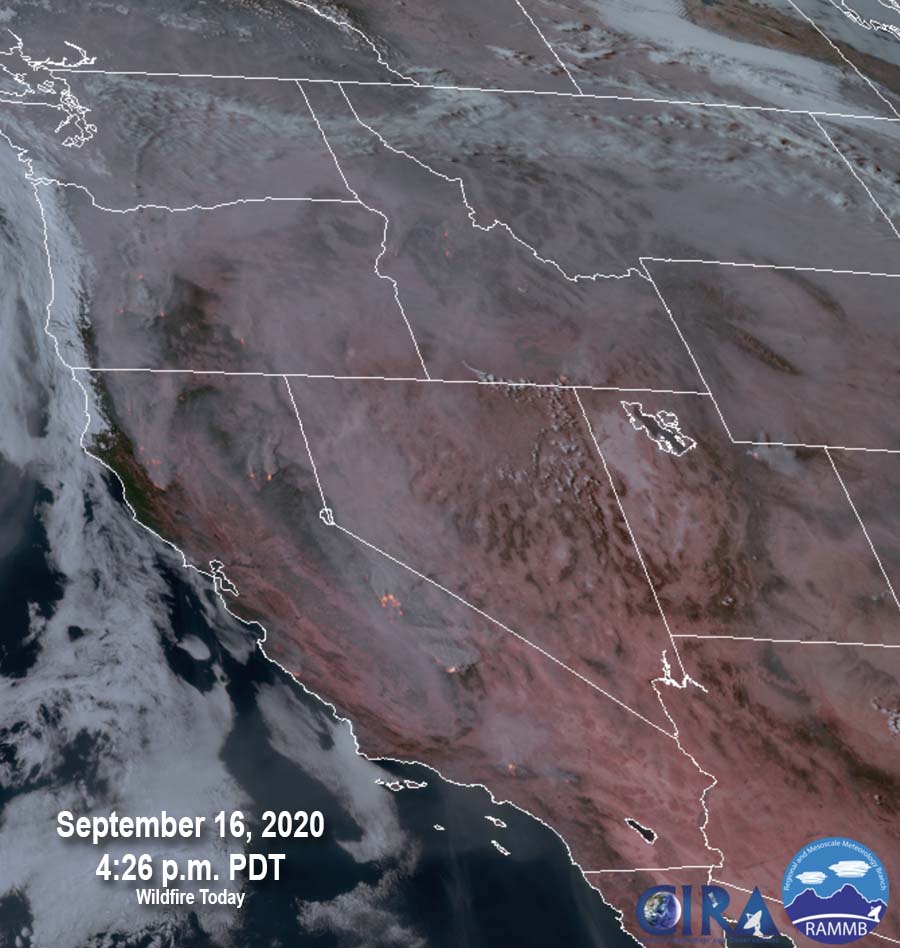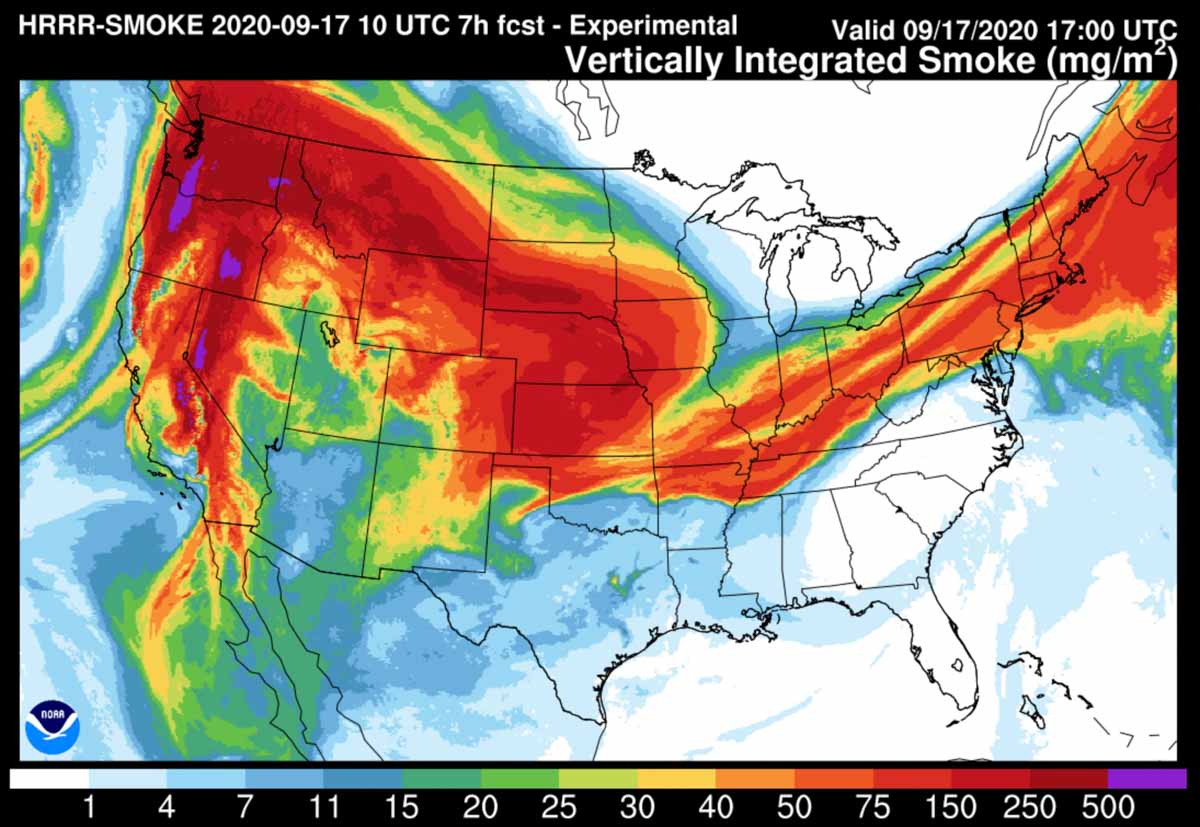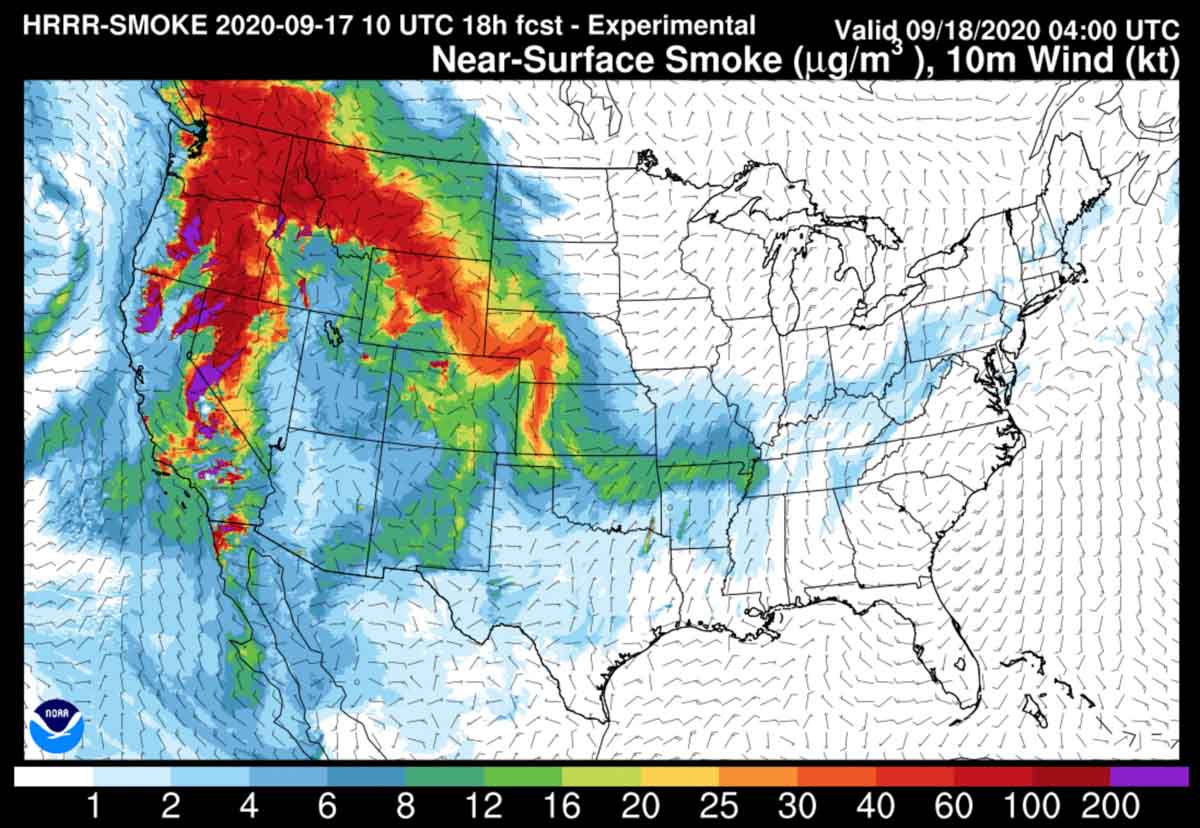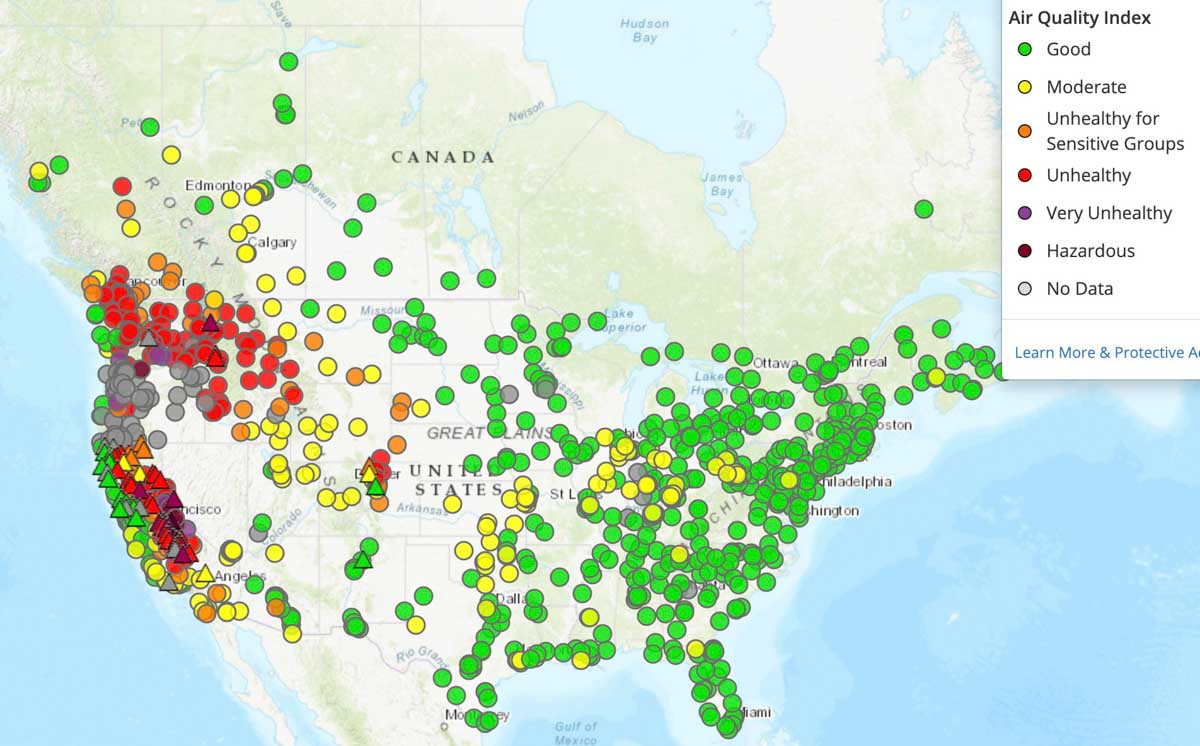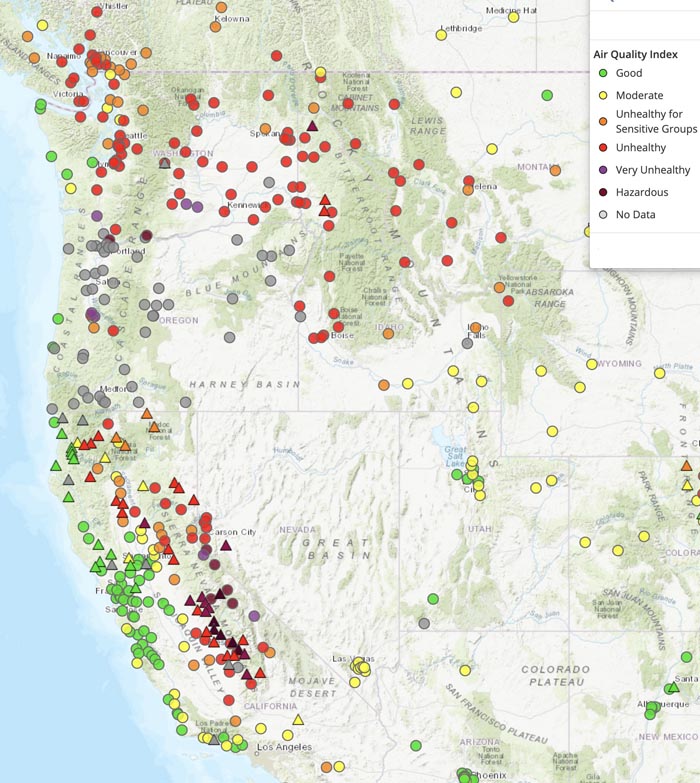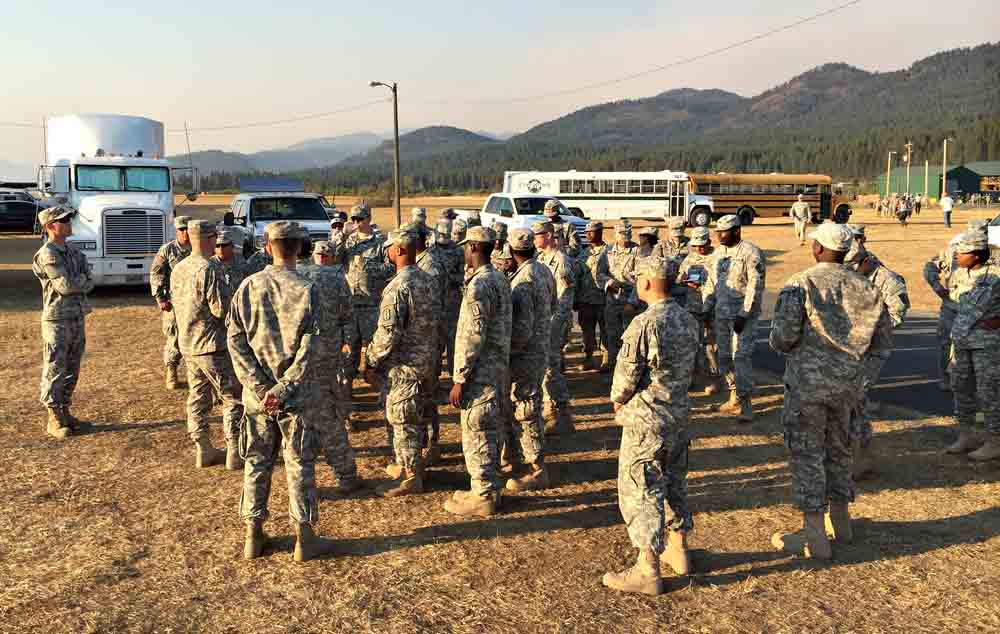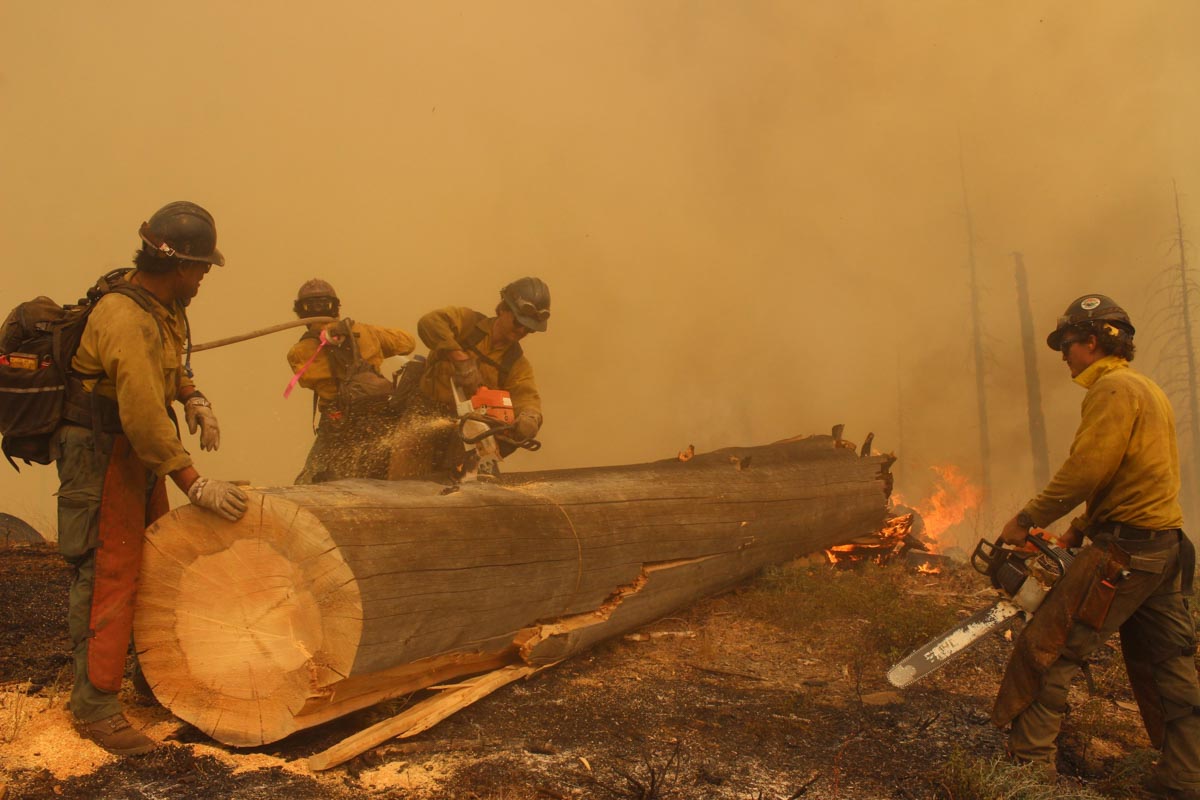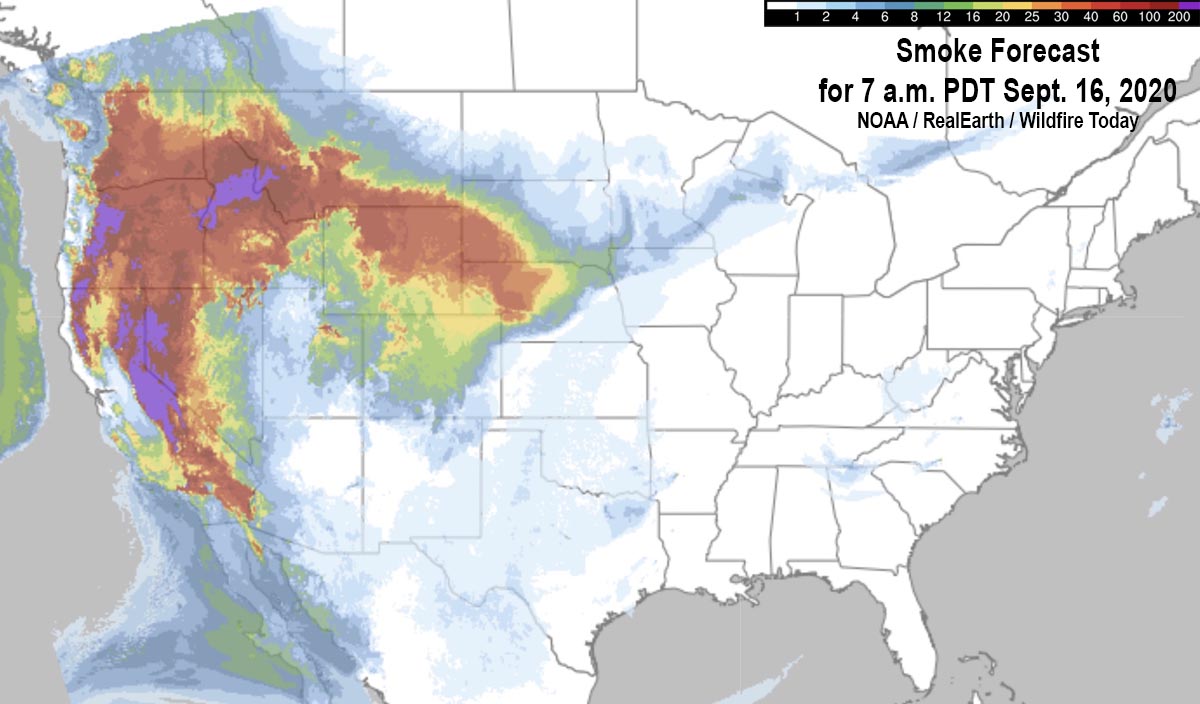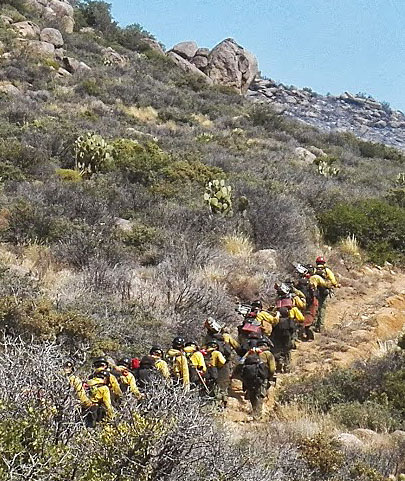
When crews of wildland firefighters in a remote area have to quickly move to a safer location due to an approaching flaming front, they hike on what they call an escape route to get to a safety zone where they can be out of danger without having to deploy their fire shelters. An average of 11 firefighters die each year while fighting fire. Of these deaths, about 44 percent are caused by entrapment or burnover events.
A key to moving to a safety zone is the travel time. Underestimating the required time can be fatal, in the worst of circumstances. That may or may not have been one of the many factors involved in the deaths of 19 firefighters on the 2013 Yarnell Hill Fire in Arizona.
Firefighters know how long it takes them to hike the three miles within less than 45 minutes while carrying 45 pounds as required by the Pack Test, or Work Capacity Test. From that it’s pretty easy to calculate their miles per hour. But that is on flat ground, a situation that is not always the case when escaping from a wildfire. Throw in steep uphill or downhill slopes, and the times will increase.
Previous research on the subject includes:
- A paper published in 2017 looked at the use of LiDAR to analyze the effects of slope, vegetation density, and ground surface roughness on travel rates for wildland firefighters’ escape routes.
- Research that studied crowd-sourced fitness data to estimate rates of foot travel on slopes and how it could be integrated into recommendations for escape routes.
- A research paper that was published July 8, 2019, written by Michael J. Campbell, Wesley G. Page, Philip E. Dennison, and Bret W. Butler. It is titled, Escape Route Index: A Spatially-Explicit Measure of Wildland Firefighter Egress Capacity.
A new study uses a different database for the speed at which fire crews can hike. It is titled, “Modeling Wildland Firefighter Travel Rates by Terrain Slope: Results from GPS-Tracking of Type 1 Crew Movement.” (download, 2.3 Mb)
As the name implies, instead of using public crowd-sourced hiking speed data, the researchers issued GPS units to nine Type 1 Interagency Hotshot Crews in the Spring of 2019. Nine of the 11 participating IHCs received seven GPS units each, and the other two received 20 GPS units each. In addition to the GPS units, crews were provided with data collection sheets and armbands to carry the GPS units.
Using data collected by firefighters — a uniquely physically fit population that usually carries heavy loads while moving — provides a set of robust, adjustable travel rate models built from instantaneous travel rate data that can be applied in a variety of contexts.
The data was collected while on training hikes. Rather than rely on GPS for elevation, which is not always accurate, only locations having the more accurate lidar data were used.
The tables below are from the research paper.

Here is an excerpt from the paper:
“The effects of the slope on the instantaneous travel rate were assessed by three models generated using non-linear quantile regression, representing low (bottom third), moderate (middle third), and high (upper third) rates of travel, which were validated using k-fold cross-validation. The models peak at about -3o (downhill) slope, similar to previous slope-dependent travel rate functions. The moderate firefighter travel rate model mostly predicts faster movement than previous slope-dependent travel rate functions, suggesting that firefighters generally move faster than non-firefighting personnel while hiking. Steepness was also found to have a smaller effect on firefighter travel rates than previously predicted. The travel rate functions produced by this study provide guidelines for firefighter escape route travel rates and allow for more accurate and flexible wildland firefighting safety planning.”
The authors of the paper are, Patrick R. Sullivan, Michael J. Campbell, Philip E. Dennison, Simon C. Brewer, and Bret W. Butler.

